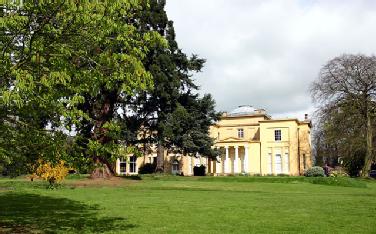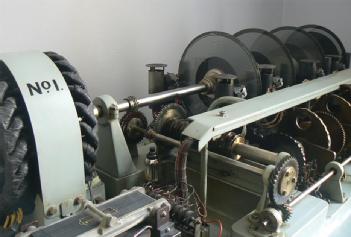
 |
Museum of Timekeeping |
NG23 5TE Upton Newark, Great Britain (UK) (Nottinghamshire) |
|
| Address |
Upton Hall
Main Street |
| Floor area | unfortunately not known yet |
|
Opening times
|
During the summer (25 May - 7 September 2018): every Friday 11am - 3pm and for Special Events. |
||||
|
Status from 08/2018
|
Adult: £5; Children under 12: free | ||||
| Contact |
|
||||
| Homepage | hwww.museumoftimekeeping.org.uk | ||||
| Location / Directions |
Upton is a small village in Nottinghamshire, England, 2 miles (3.2 km) east of Southwell, 5 miles (8.0 km) west of Newark and 3 miles (4.8 km) south of Hockerton; it lies on the A612 Nottingham-Newark road. When travelling from Newark direction on the A612 the museum and car park entrance is situated on the Main Road, on the right, after the bend with Hockerton Lane adjoining. If approaching from the Southwell direction on the A612 we are situated on the Main Road, on the left, 200m beyond the Cross Keys pub and before the bend with the Hockerton Lane adjoining. Free parking |
| Description | The museum, based at the home of the British Horological Institute, in Upton- near Newark and Southwell, houses a fascinating collection of clocks, watches and timepieces brought together by BHI members since its founding in 1858. The BHI Museum Trust, a registered charity helps to ensure the long-term future of the collection and its enjoyment by all. Visitors can explore the museum’s treasures, including Britain’s Speaking Clocks and Captain Scott’s pocket-watch carried on his 1912 Antarctic expedition. A few miraclesThere are currently over two thousand clocks, watches and other artefacts on display in the museum and the reserve collection. Here are just a few of the miracles you find here. You see clocks that were made as early as the 17th century. You hear them chime. But you may have to strain your ears to hear the world’s most sophisticated wristwatches. They do not tick – loudly, that is – but seeing all these wonderful machines certainly sticks in your mind. Minuscule and colossalFrom minuscule mechanisms and precision engineering to colossal constructions and atomic devices, the many highlights of this collection include the first successful electric timepiece, the personal watch of Captain Scott of the Antarctic, and no less than two speaking clocks. The voice of the first speaking clock in 1936 was that of Ethel Cain, later a Hollywood actress. You find out what problems its makers had to solve before she could be heard. Speaking Clocks It was Saturday 18 July 1936 when callers in the London area became the first people in the United Kingdom to dial into the new Post Office Speaking Clock (Mark I) and were able to hear the golden voice of Ethel Cain. In its first year of operation the service logged 13 million calls – over 35,000 a day – and in recent years this figure has risen to an annual 100 million calls. Accurate to one tenth of a second With the introduction of a speaking clock up to one hundred callers could listen simultaneously to the time being announced at 10 second intervals. The announcements were accurate to one tenth of a second. After listening for 90 seconds the caller, if they had not wrung off already, would be disconnected automatically. The words for the speaking clock were first recorded on to a sound film strip and then laid down photographically on to four glass discs, with each individual phrase given its own track within the disc. The actual time announcements were created by photo-electrically selecting appropriate words or phrases into the correct sequence. To play the recorded audio message, a photocell and lamp assembly were indexed to the tracks on the disc so that no physical contact was ever made with the disc. Phrases such as “At the third stroke”, “it will be”, “four”, “o’clock”, “precisely” were thus assembled seamlessly by a mechanism using revolving cams. The mechanism for rotating the discs, for building up the time announcements and for changing from one announcement to another was electrically driven and, when installed in the Holborn telephone exchange, was checked automatically against a time signal transmitted from Greenwich. Britain’s First (Mark I), Second (Mark III) and Third (Mark IV) Speaking Clocks can be seen at the BHI Museum Trust at Upton Hall. |
[dsp_museum_detail.cfm]
| Data Compliance | More Information |
 museumoftimekeeping.org.uk
museumoftimekeeping.org.uk 
